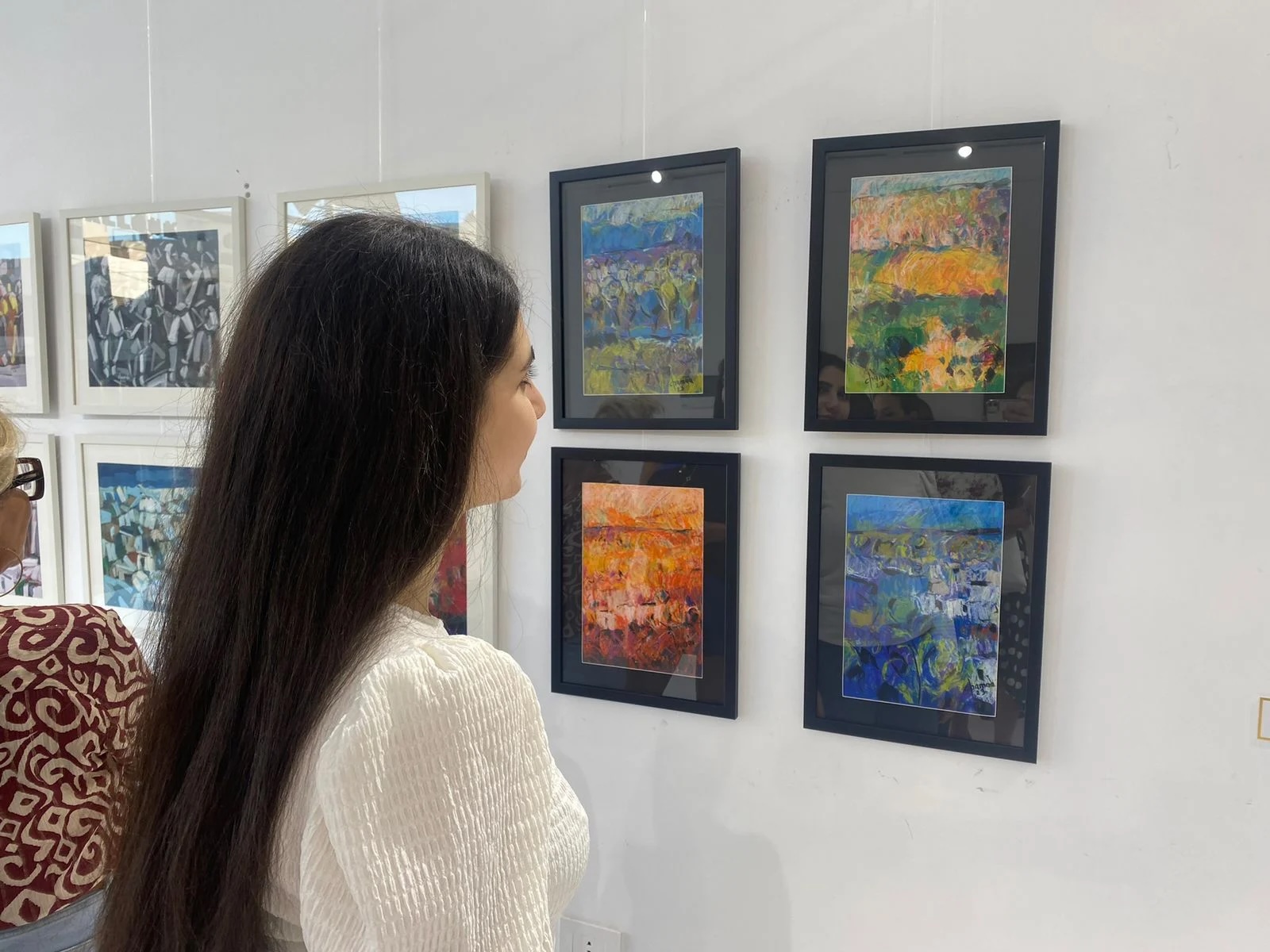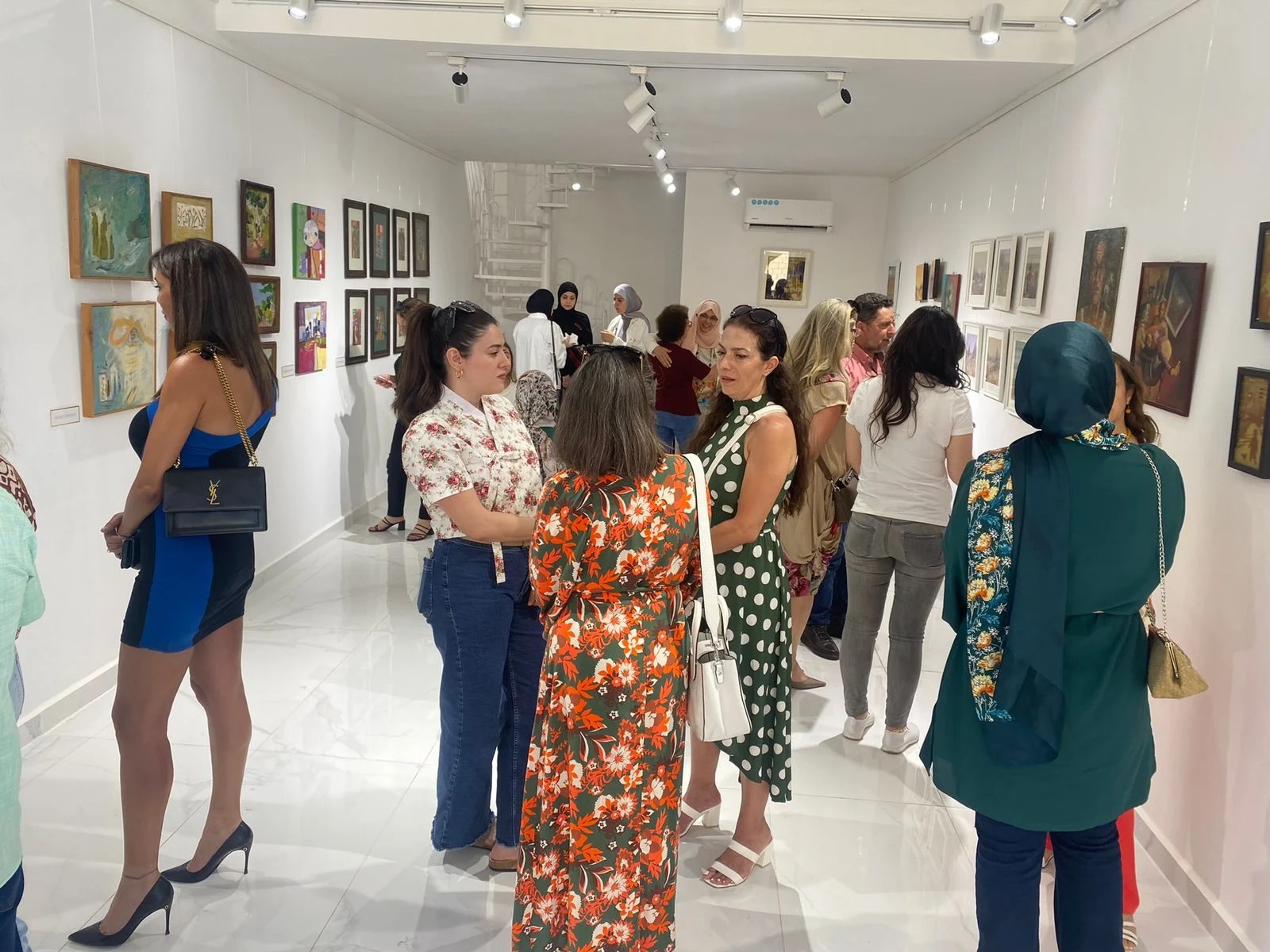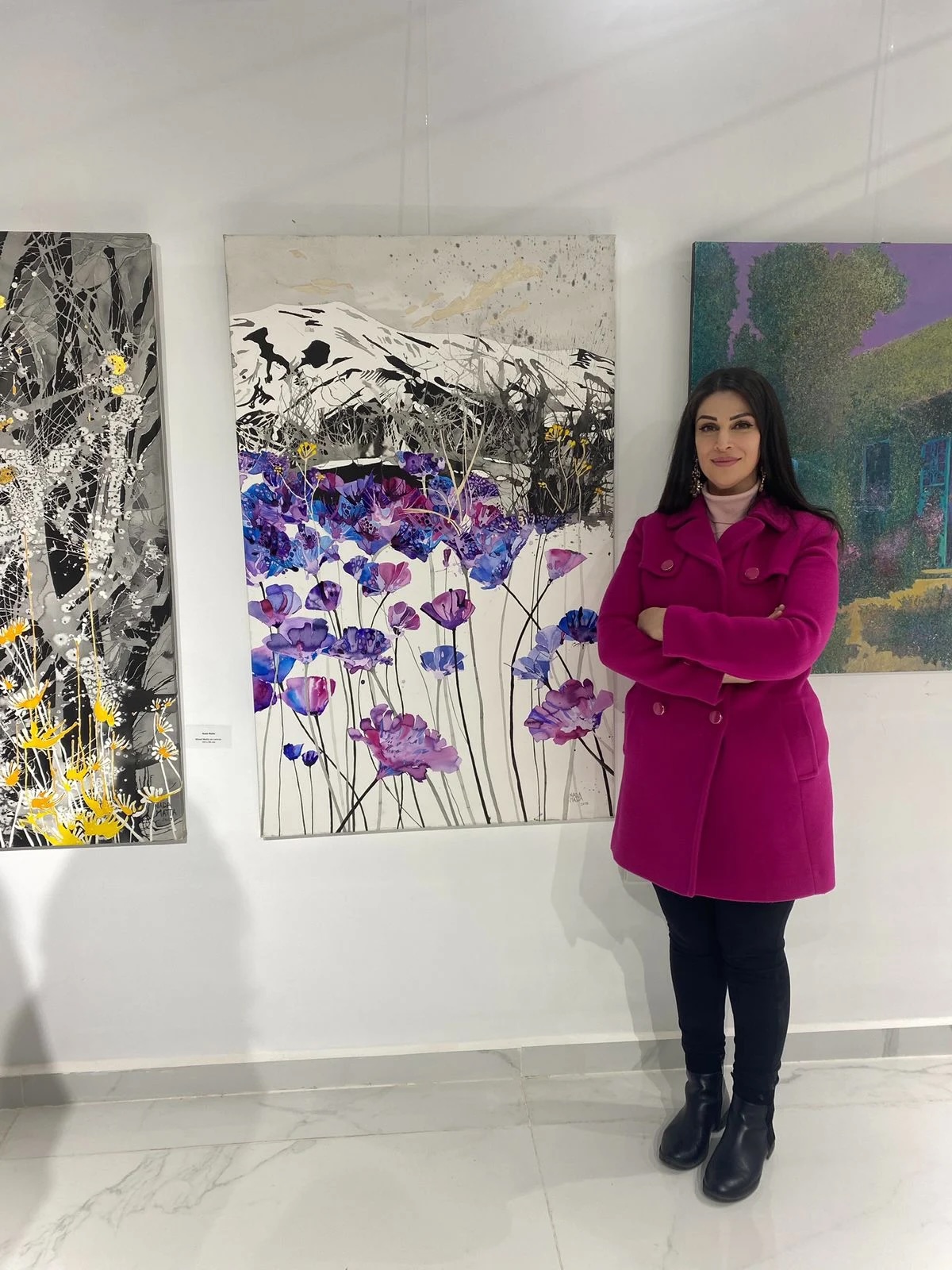
The front of the Nour Ballouk gallery in Nabatieh. (Credit: DR)
"I was lucky enough to be taught by great artists such as Ali Shams, Fatima al-Hajj, Mohammad Rawass, Jamil Molaeb and others. The one who had the greatest impact on my work, however, was Rawass. He taught me the art of composition, showed me how to see art in everything and find my own way,” said Nour Ballouk. “I learned color from Fatima el-Hajj ... Each master had something to give and gave it generously,” she continued.
“The most important thing is never to stop,” said the woman who sees life, even in its most humble aspects, only through the filter of art. Nature, a film watched with friends, all irrigate the material of the canvases she covers with glee. But the impact of current events is also important for this child of southern Lebanon, born in Nabatieh, whose art often expresses her commitment to peace, women and individual freedoms.
 Small paintings” on the walls of the Nour Ballouk gallery in South Lebanon. (Credit: DR)
Small paintings” on the walls of the Nour Ballouk gallery in South Lebanon. (Credit: DR)
The light of the South
Was being born and raised in southern Lebanon, exposed to the winds of war and constantly neglected by the government, given rise to a singular artistic community? Do the artists of the south have anything in common?
"The villages of the south have the same charm as all the villages of deepest Lebanon. Same nature, same quality of silence. Perhaps it's the light that's different, brighter. Southern painters are extremely diverse in terms of style, from Hussein Madi to Darwish Shamaa, Ayman Baalbecki, Adel Kodeih, Ali Shams, Fatima al-Hajj. But when you think about it, the painters of the south have a particularly vibrant palette in common,” emphasized Ballouk.
A not-so-naive dream
As for her idea of creating an art gallery in Nabatieh, she recalled that as early as her graduation year, she dreamt of transforming an old palace in the city into a museum, with a view to raising the funds needed to restore it. “They were probably naive dreams,” said the artist. As time went by, this museum and exhibition enthusiast, who never hesitates to drive two hours to visit Beirut's art events and who, when traveling, scours all the exhibition venues, became a mother and had to slow down the pace. Apart from a few artists' studios that can sometimes be visited by appointment, there are no art galleries in southern Lebanon. "I woke up in the middle of the night and said to myself, 'I'm going to make this gallery, even if it means using it at least as a cultural center,'" she stated. A month later, she found her rare pearl and the project was launched.
 Vernissages attract a diverse public interested in modern art. (Credit: DR)
Vernissages attract a diverse public interested in modern art. (Credit: DR)
A gallery, because 'life goes on'
Barely ready, with its sign bearing Nour Ballouk's eponymous logo, the gallery suffered the impact of the war in Gaza. The artist, now doubling as curator, postponed the inauguration, but eventually decided to open this unlikely place in an unlikely context, on the threshold of 2024, because “life goes on.” "The painters, long before the public, called me crazy. They asked me what I was counting on, knowing that the public was not familiar with art galleries. I replied that times had changed, and that a start had to be made, and that I was ready to assume the madness of doing it,” she said.
“The little painting” is the title of the fourth exhibition at Galerie Nour Ballouk. Two group shows featured works by great Lebanese masters, which the Nabatieh public discovered with great interest and which attracted art lovers from all over the country. In addition, the solo exhibition by the great French calligrapher of Iraqi origin, Hassan al-Massoud, was entirely sold out. As for “small paintings,” Nour explained that “small formats are denser, freer, less dependent on the constraints of canvas dimensions.” For this exhibition, which brings together 10 leading artists, she is embarking on a curatorial task of “stitching” together small, expressive canvases like the elements of a narrative that will eventually hold together as a matter of course.
Let Israel widen the front? Nour has no regrets. Having just graduated in 2006, she lost all her paintings (around a hundred) in the destruction of her studio by an Israeli bombardment, and she knows that art can still be produced from the death of art. At the time, she exhibited fragments of her murals, recomposed to celebrate life, at French cultural centers in Lebanon. “We're like that,” she said.
 Artist Nour Ballouk in his gallery in Nabatiyé, because life goes on. (Credit: DR)
Artist Nour Ballouk in his gallery in Nabatiyé, because life goes on. (Credit: DR)
This article originally appeared in French in L'Orient-Le Jour.